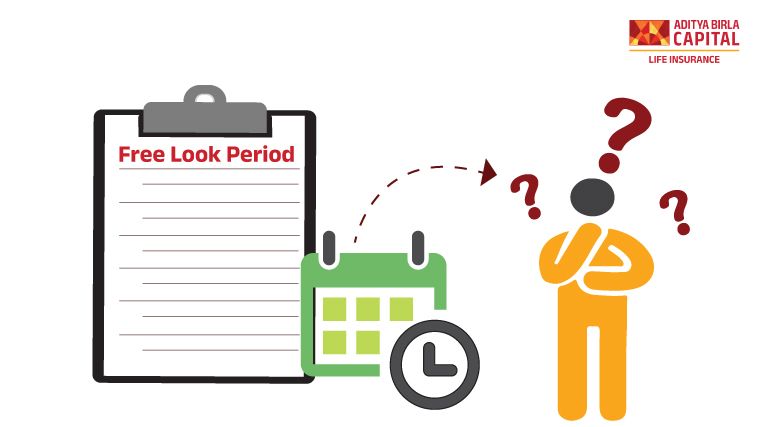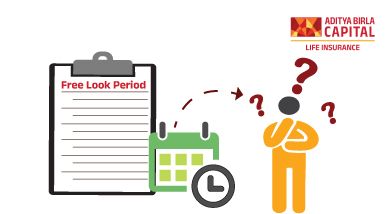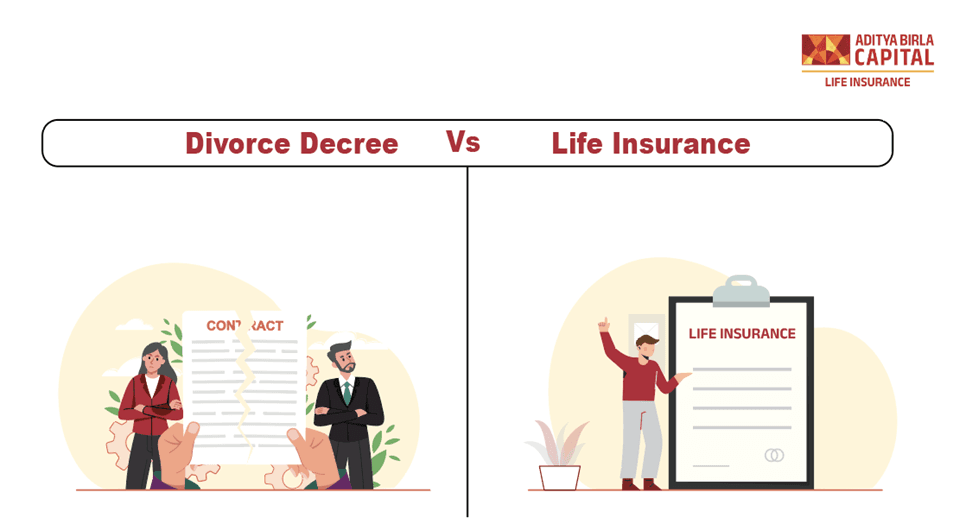Aditya Birla Sun Life Insurance Company Limited
Free Look Period - Meaning And How It Works?

Plan Smarter, Live Better!

Thank you for your details. We will reach out to you shortly.

Currently we are facing some issue. Please try after sometime.


- Table of Contents
When purchasing an insurance policy, it is crucial to understand the terms and conditions before committing to a long-term contract. To protect the interests of policyholders, insurance regulators have mandated a provision known as the "Free Look Period." In this article, we will explore the meaning and significance of the free look period in insurance policies in India. We will delve into its purpose, duration, and the steps involved in exercising this important right. Whether you are a new policyholder or considering purchasing insurance, understanding the free look period will empower you to make informed decisions.
What Is The Free Look Period?
The free look period in life insurance is time period provided to policyholders after purchasing an insurance policy. It allows them to review the terms, conditions, and benefits of the policy in detail. If policyholders find the policy unsuitable or have second thoughts, they have the right to cancel it within the free look period without incurring any penalties or loss.
How Does Free Look Period Work?
Let’s understand how this free look period functions –
-
Duration
The duration of the free look period varies depending on the type of insurance policy. As per the regulations set by the Insurance Regulatory and Development Authority of India (IRDAI), the free look period generally ranges from 15 to 30 days from the date of receipt of the policy document.
-
Purpose
The primary purpose of the free look period is to provide policyholders with an opportunity to thoroughly review the terms and conditions of the policy. It ensures transparency and helps individuals to make an informed decision without feeling pressured or rushed. Further, if the insured is not in agreement with the policy terms and conditions mentioned therein, the insured shall choose to exercise the free look cancellation option.
-
Applicability
The free look period is applicable to various types of insurance policies, including life insurance, health insurance, and general insurance. However, it is important to note that not all policies may have a free look provision. It is advisable to check the policy document or consult with the insurance company to confirm the availability of this feature.
-
Refund
When you have not made any claims during the free-look period, you are eligible for a refund of the premium you have paid. However, some deductions apply, like stamp duty charges, administration fees, expenses for your medical check-up, and a portion of the risk premium for the policy period wherein you were provided insurance under the policy.
What Is The Purpose Of A Free Look Period In An Insurance Policy?
The free look period in an insurance policy is designed with you in mind, giving you a safety cushion to review your policy thoroughly. It ensures you have ample time to understand the ins and outs of your life insurance before committing long-term. During this time, you can dive into the policy documents, grasp the terms and conditions, and assess if the coverage fits your needs and expectations.
This period empowers you to make an informed decision. If you come across terms or conditions that do not feel suitable for you, you have the option to change your mind and cancel the policy without penalties.
It also acts as a shield against any deceptive sales tactics or misunderstandings about the policy terms. Sometimes agents may push policies that are not the best fit. But with the free look period, you have the freedom to return the policy if it does not match your expectations.
Benefits and Limitations of the Free Look Period
Let's explore the advantages and limitations of the free look period –
-
Advantages
➔ It lets you carefully examine your policy, empowering you to make well-informed decisions. ➔ You can change your mind without facing financial consequences. ➔ Knowing you have a chance to rectify the errors offers comfort and confidence. -
Limitations
➔ The free look period is usually brief, lasting 15 to 30 days, depending on the insurance company and policy. ➔ If you cancel the policy during this period, any claims made may not be covered.
Example Of The Free Look Period
Srikanth bought a health insurance plan that came with a 15-day free look period. He received his policy documents on January 15, 2024, marking the beginning of his free look period, which ends on January 30, 2024.
Upon receiving the documents, Srikanth meticulously examines them. He carefully reads about the benefits, limitations, exclusions, and other terms and conditions. During this thorough review, he realizes that the features and benefits of the policy are not the same as he anticipated. Concerned about adequately safeguarding his family, he opts to cancel the policy within the free-look period.
If Srikanth cancels the plan before January 30, 2024, the insurer will refund the premium he paid after deducting stamp duty, administration, and other applicable charges. This decision allows Srikanth to explore alternative insurance options that provide the desired coverage without any financial consequences.
When Does A Free Look Period Begin?
The free-look period kicks off as soon as you get the policy document. It is crucial to give it a thorough read right away so you can make the most of the free look period.
Essential Details Related To Free Look Period
It is important to understand a few key points about the free look period –
- Timeframe:
How long the free look period lasts differ among insurance companies and policy types. - Cancellation Steps:
You need to follow the insurer's guidelines precisely to cancel your policy during this period. - Refund Details:
Usually, the insurer pays back your full premium, minus any fees, within a set time after cancellation.
To Conclude,
The free look period is a valuable opportunity for policyholders to review their insurance policy thoroughly after receiving it. During this time, you can cancel the policy if it does not meet your requirements with the assurance of getting a refund of the premium paid minus any applicable charges. Understanding the duration, cancellation process, and refund process is essential for making informed decisions. This period provides peace of mind, ensuring that individuals can make confident choices about their insurance coverage without feeling rushed or pressured.
Thank you for your details. We will reach out shortly.
Thanks for reaching out. Currently we are facing some issue.
Buy ₹1 Crore Term Insurance at Just ₹465/month*
ABSLI Super Term Plan
Term plan designed for salaried individual.
3 Plan Options
Health Management Service Worth ₹46000
100% return of premium
Life Cover
₹1 crore
Premium:
₹465/month*
Most Popular Calculator
Buy ₹1 Crore Term Insurance at just @ ₹576/month*
ADV/8/24-25/1337







